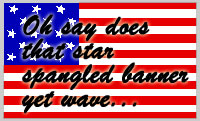
Worksheets and No Prep Teaching Resources
Walking in Their Footsteps: Tracing Maryland's Early Settlements
 Worksheets and No Prep Teaching Resources |
Walking in Their Footsteps: Tracing Maryland's Early Settlements |
| edHelper's suggested reading level: | grades 4 to 6 | |
| Flesch-Kincaid grade level: | 9.84 |
| Print Walking in Their Footsteps: Tracing Maryland's Early Settlements (font options, pick words for additional puzzles, and more) |
|
| Quickly print reading comprehension |
|
| Print a proofreading activity |
| Leave your feedback on Walking in Their Footsteps: Tracing Maryland's Early Settlements (use this link if you found an error in the story) |
|
Walking in Their Footsteps: Tracing Maryland's Early Settlements
By Carolyn Murphy |

|
 1 Settlers came to the New World for varying desires and interests yet were unified by the belief that their voices were important in the quest for freedom. Leaving their countries, the settlers were bound to set down footsteps in a new area. The first settlers came to Maryland from England committed to religious freedom, separation of church and state, and a desire for new land and opportunities. Let's trace the settlers' steps through Maryland's time including their arrival in the New World, their introduction to local Native American groups, and the development of the foundation of a new society - government, laws, and social codes.
1 Settlers came to the New World for varying desires and interests yet were unified by the belief that their voices were important in the quest for freedom. Leaving their countries, the settlers were bound to set down footsteps in a new area. The first settlers came to Maryland from England committed to religious freedom, separation of church and state, and a desire for new land and opportunities. Let's trace the settlers' steps through Maryland's time including their arrival in the New World, their introduction to local Native American groups, and the development of the foundation of a new society - government, laws, and social codes.